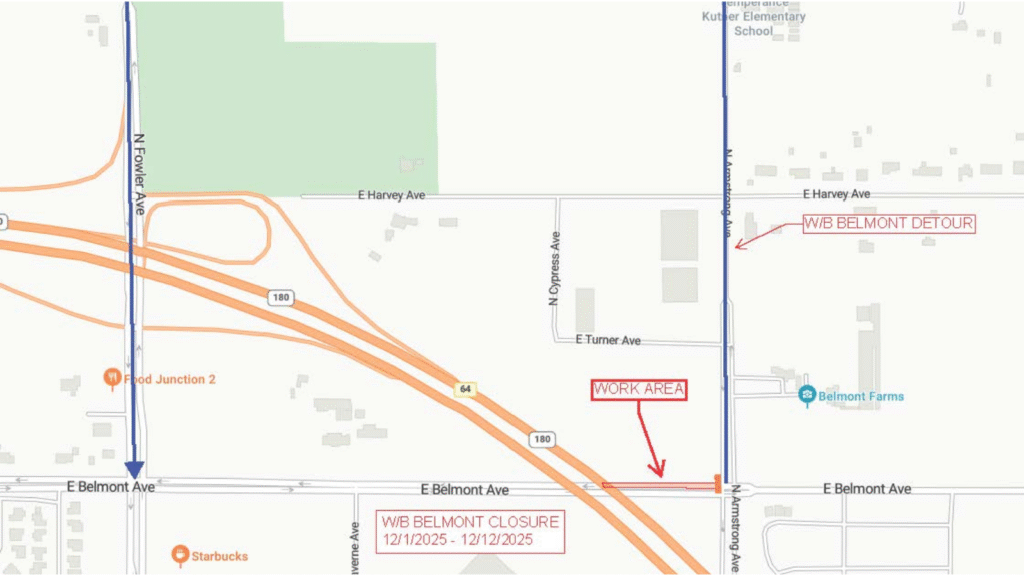Share
|
Getting your Trinity Audio player ready...
|
Clovis City Council members on Monday gave city staff the green light to continue working with Clovis Unified School District on a potential sewer connection to the Terry Bradley Educational Center.
But council members, hearing concerns raised by representatives of the building industry, said they want to make sure that the city will still have enough sewer capacity for its own future growth and won’t be hampered by any delays by the city of Fresno.
“I’m just still very concerned about how we can write these conditions in such a way that we are 100%, 1,000% protecting the interests of our people, of our residents moving forward, of the development that’s going to happen. And I just wish I had more confidence in the other side of things,” Councilmember Diane Pearce said.
The Terry Bradley Educational Center, to be built between Highland and Leonard avenues north of McKinley Avenue, is in unincorporated Fresno County in an area slated for annexation by the city of Fresno in the future.
However, Fresno’s development plans for the area have slowed, and the city’s schedule for completing infrastructure, including sewer lines, is set for 2028, Clovis Unified Assistant Superintendent Denver Stairs said.
That would be three years after the new campus is scheduled to open to grades 7 through 9. A new grade level would be added yearly over the following years, with about 4,500 students on the campus when the middle and high schools are fully enrolled, Stairs said.
Clovis Unified says it needs to move forward with the project, even though the city of Fresno has delayed its own growth plans, because of existing overcrowding in the Clovis East region. Without the new educational center, the district would need to substantially redraw boundary lines to move students northward and westward into the Clovis West and Clovis North regions, where there is more capacity, Stairs said.
Builders Wary of Fresno’s SEDA Delay
Representatives of the building industry told the council that while they support Clovis Unified’s plan for the new educational center, the city will need to make sure that its own growth also is protected.
Mike Prandini, president of the Building Industries Association of Fresno/Madera Counties, said a majority of the Fresno City Council members are opposed to developing the city on its fringes, including the Southeast Development Area, or SEDA. The city’s planning for the region has been going on for more than two decades, he said.
Prandini urged the Clovis council to write any agreements so they are bulletproof against future delays.
“Agreements have to be really tied down to really make it certain that Fresno will assume responsibility for taking the effluent at the end of this period … There are concerns that this could turn out to be a real mess in 15 years. So whatever you do, you need to tie the city of Fresno’s hands and nail them to the ground, that they cannot escape,” Prandini said.
Jeff Harris, representing Wilson Homes, said a number of developers are interested in moving forward with projects in the area but are seeking assurance that Fresno will assume responsibility for processing sewage from the Terry Bradley center in the future.
“As the council members are aware, Wilson has some projects that we’re anticipating bringing online. You’re aware of Granville and the efforts they have in with the former McFarland property. You’re aware of the work that Lennar and others have up in Heritage Grove. All of that is dependent on having someplace to put the effluent, and we don’t want to be in a situation where anyone has any surprises,” Wilson said.
(Disclosure: Granville Homes president/CEO Darius Assemi is publisher of GV Wire.)
Several Options for Center’s Sewer Connection
Clovis Unified has outlined several different options for providing sewer services to the site. One would be for an 8,000-foot line connecting the center to the city of Fresno, while another is for a 4,900-foot line to connect to Clovis’ Fowler trunk line.
The third option would be for the district to build and operate an off-site “package plant” that would remain until the center could connect with Fresno utilities.




















